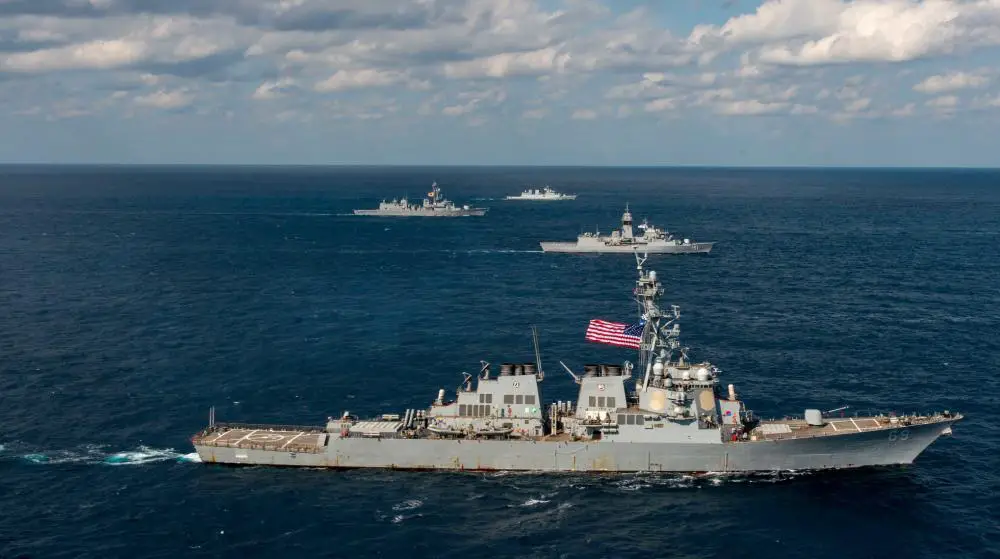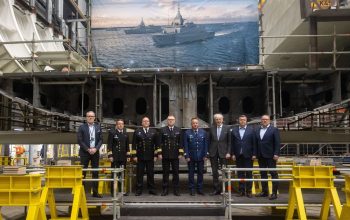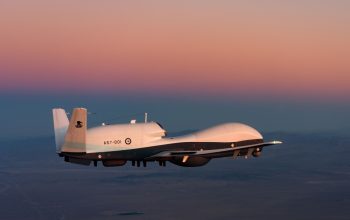Opening ceremonies kicked-off exercise Malabar 2022, Nov. 8, followed by scheduled at-sea exercises involving naval ships, aircraft and personnel from Australia, India, Japan, and the United States in the Philippine Sea, off the coast of Japan. This year marks the 26th iteration of the Malabar series of exercises, which began in 1992 between the United States and India. This year’s at-sea exercise includes a variety of high-end tactical training events, submarine integration, anti-submarine warfare training, air defense exercises, multinational replenishment-at-sea operations, communications drills, joint warfighting planning scenarios, gunnery exercise, and maritime interdiction operations. The exercise has evolved in scope and partnerships and now includes Japan and Australia. This is the third time that all four nations have participated in Malabar to advance the collective planning, integration and employment of advanced warfare tactics between participating nations.
“Through this high-end tactical exercise, we were able to improve our tactical capabilities and strengthen cooperation with the U.S., India, and Australian navies, thereby contributing to the creation of a desirable security environment for Japan,” said Japan Maritime Self-Defense Force (JMSDF) Rear Adm. IKEUCHI Izuru, commander of Escort Flotilla 3, who was in charge of the unit commander on the Japan side.
“This exercise represents an outstanding opportunity for our like-minded maritime forces to work together, demonstrating our shared commitment to the region and collaborative approach toward security and stability. “Now, it is more important than ever for the forward-deployed Carrier Strike Group to work closely with other maritime forces and deter all who challenge a free and open Indo-Pacific,” said Rear Adm. Michael Donnelly, Commander Task Force 70 (CTF-70)/Carrier Strike Group Five (CSG 5).

U.S. Navy forces participating include the embarked staffs of CSG 5, Carrier Air Wing (CVW) 5, and Destroyer Squadron (DESRON) 15 along with the aircraft carrier USS Ronald Reagan (CVN 76), guided-missile cruiser USS Chancellorsville (CG 62), and guided-missile destroyer USS Milius (DDG 69). Australian, Indian, Japanese, and U.S. maritime forces routinely operate together in the Indo-Pacific, fostering a cooperative approach toward regional security and stability. Japan is this year’s exercise lead. The Malabar planning and exercise lead rotates each year among participating nations, along with the exercise location to demonstrate the combined ability to exercise across the entire Western Pacific and Indian Ocean. Japan Maritime Self Defense Force (JMSDF) surface units participating include JS Hyuga (DDH 181), JS Shiranui (DD 120),JS Takanami (DD 115), JS Oumi (AOE 426) along with a P-1 aircraft. Indian Navy surface units participating include a Shivalik-class FFG, Kamorta-ClassCorvette, a P-8I aircraft, and Marine Commandos (MARCOS) personnel.
Participation in high-end maritime exercises, such as Exercise Malabar, demonstrates Australia, India, Japan, and the United States commitment to working with strategic partners in the Indo-Pacific region. Royal Australian Navy (RAN) participants include His Majesty’s Australian Ships Arunta (FFH 151) and Stalwart (A304) and Submarine Farncomb along with a Royal Australian Air Force (RAAF) P-8A maritime patrol aircraft. USS Ronald Reagan Carrier Strike Group is underway conducting operations in support of a free and open Indo-Pacific. U.S. 7th Fleet conducts forward-deployed naval operations in support of U.S. national interests in the Indo-Pacific area of operations. As the U.S. Navy’s largest numbered fleet, 7th Fleet interacts with 35 other maritime nations to build partnerships that foster maritime security, promote stability, and prevent conflict.















